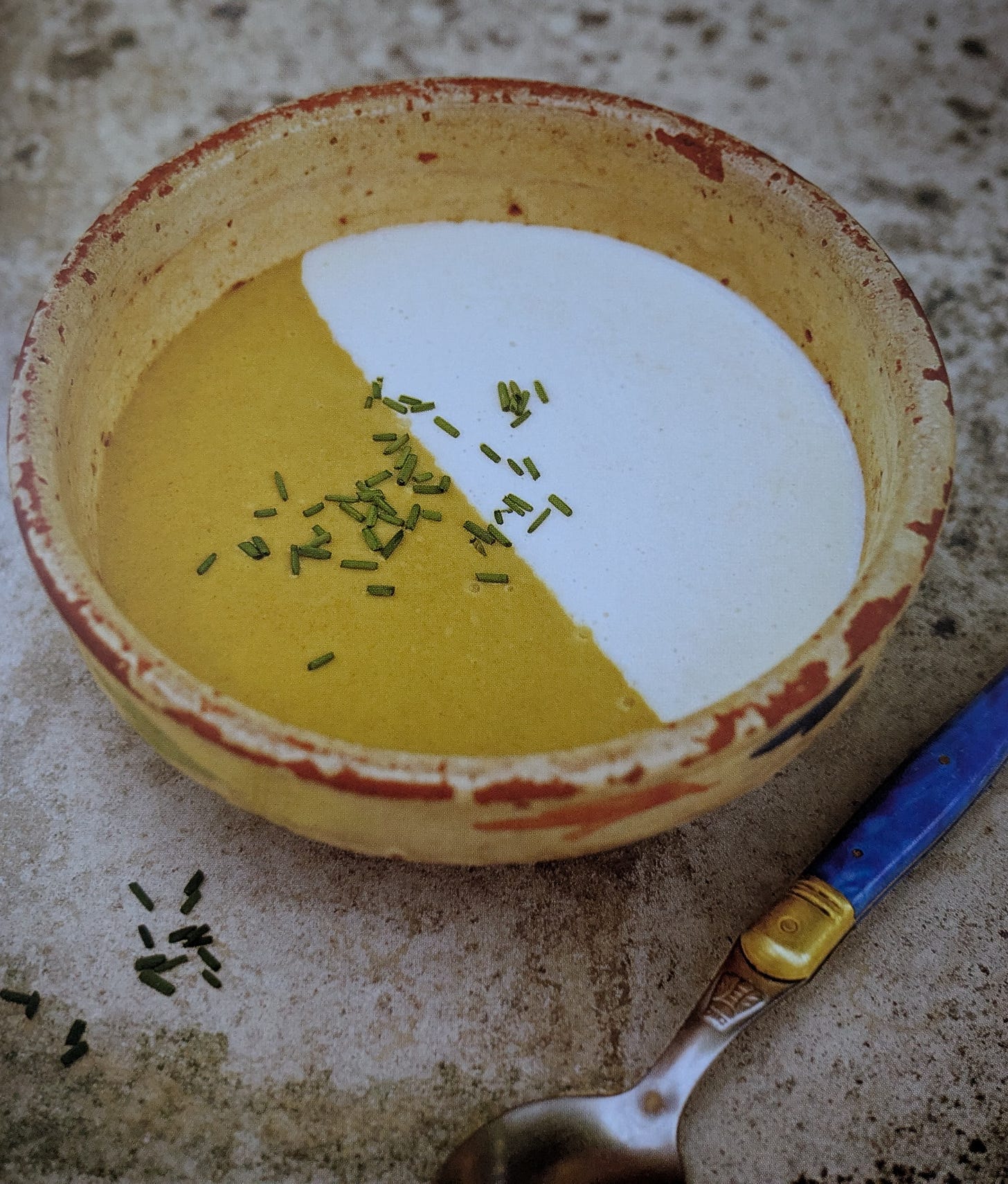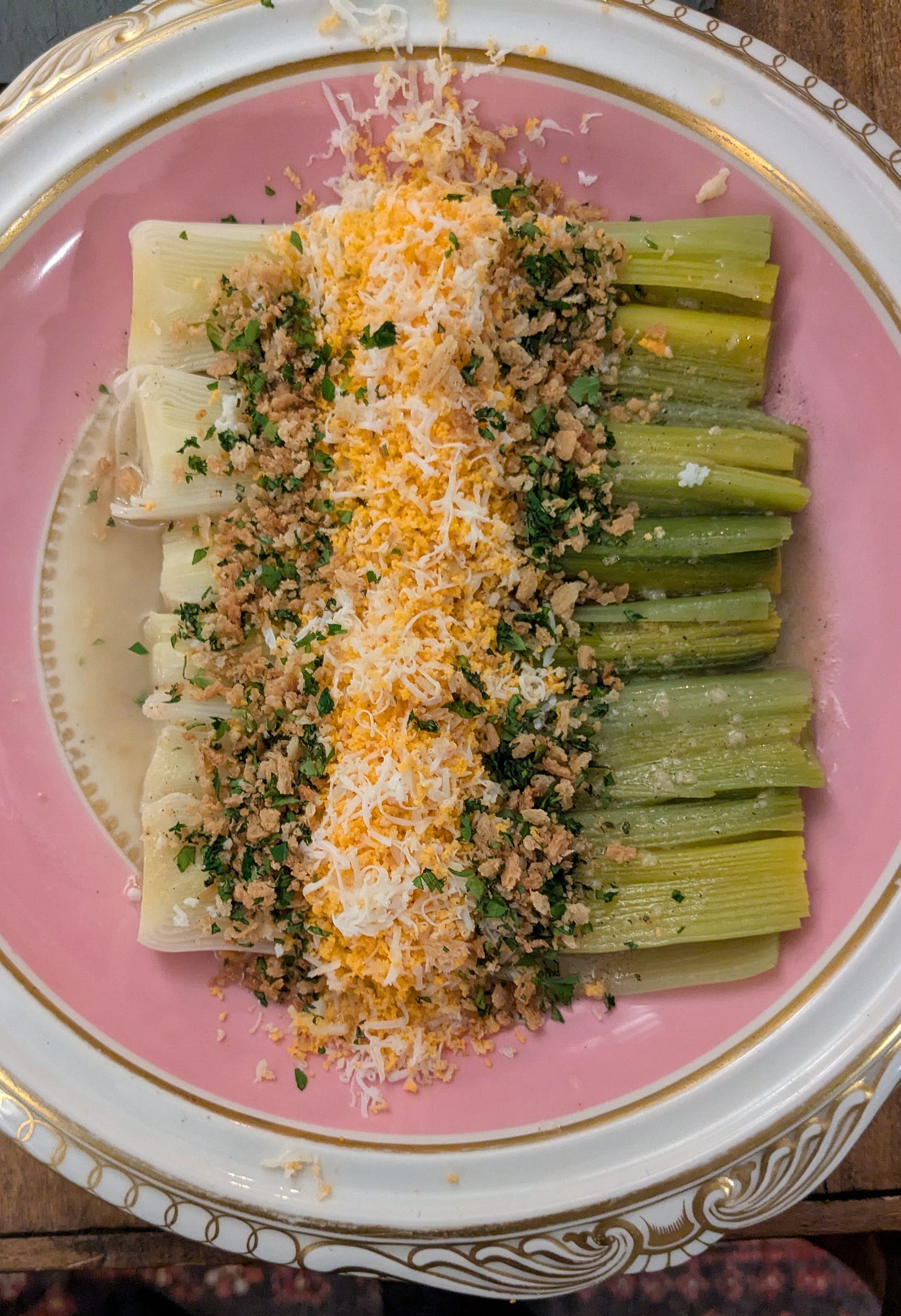
I am guilty of not taking the leek seriously. Another feast day slid by ignored by me - St David’s Day, on the 1st of March. Along with singing and dancing and general carousing, the Welsh, whose saint David is, wear leeks in their lapels or pinned to their berets and hats. (Daffodils if they’re a little faint-hearted, that flower being known as Peter’s leek, though it’s not clear how Peter muscled in.)
The wearing of a leek is an ancient tradition. Even Shakespeare was aware of it, referring to the custom in Henry V in a quotation too long-winded to repeat. Legend has it that 7th century King Cadwaladr of Gwynedd instructed his soldiers to strap a leek to their armour in battle to distinguish them from the enemy, though that’s a story also associated with St David.
David was the son of Non (nothing to do with Monty Python) and the grandson of Welsh royalty, Ceredig ap Cunedda, king of Ceredigion (nothing to do with Tolkien or Game of Thrones). In this version, in which the dates don’t quite compute with King Cadwaladr’s battle given David perished earlier in 569 or possibly in 601 AD, David ordered his soldiers in the battle (both king and saint confronting the pagan Saxon invaders of Britain) to wear a leek on their helmets to distinguish friend from foe. You’d have thought a strip of coloured cloth might have served the purpose more durably and saved the leek for Cawl Cennin, traditional Welsh leek soup. Another explanation has it that regardless of whichever figurehead was leading the army, the point was that the battle took place in a leek field. Yet another story associates the leek with St David because it was the only thing he would eat when fasting.
The leek’s colours, green and white, were adopted by the feared and respected Welsh archers for their army uniforms during the 14th century. Household records of the Welsh Tudor Dynasty, rulers of England and Wales from 1485 to 1603, note payments to the household guards for leeks to sport on St David’s Day. Once upon a time, possibly up until yesterday, if a Welsh maiden wanted to see who she might marry, she slept with a leek under her pillow on St David’s Day in expectation he would be revealed to her.
Faith in the leek goes back even further, to the 4th century BC and the time when Druids worshipped trees, flowers and plants. It was believed leeks, rich as they are in antioxidants, minerals, and vitamins could cure colds, alleviate the pain of childbirth, heal battle scars, and even protect against lightning and evil spirits.
These days, no Welsh rugby fan good and true would show up at a game without a leek in the lapel to guide their team to victory.
I can’t think of a single other vegetable burdened with such responsibilities.
Being a lazy cook and insouciant shopper, I always thought: I’ve got onions. If I soak them in iced water for a while, do I really need to go out for shallots or leeks? I mean, how much difference could there be between the three alliums?
Quite a significant amount, it appears. All three are closely related but each has its own characteristics. The onion with mild to strong pungency is present in almost every cuisine. In Moscow between the end of October and early June when there were no onions to be had, I found cooking rendered pretty well impossible, certainly extremely dull.
Shallots I never quite understood the point of. But then I found them ready-fried in crispy shards in Asian supermarkets to sprinkle onto almost anything (or to be shovelled into the mouth while standing at the worktop). Cooked, they have a flavour that combines mild onion with garlic, making it useful when you don’t want an intrusive flavour in your base. Baked in their skins with fresh thyme and oil, they beat onions hands down. You press your fork against them and their softened layers ooze out.
Leeks are milder than both, almost sweet, a reliable base in soups and casseroles. You couldn’t make one of the best soups of all time, a potato-and-leek potage bonne femme, without them, nor vichyssoise, its summer version blitzed with cream and served chilled.

It may seem like a vegetable for cooler climes. But according to the Tanakh, the Hebrew Bible, the leek grew widely across Egypt, dried shards from archaeological sites showing it was part of the Egyptian diet from earlier than 2 BC and prolific across Mesopotamia. In Rome of 1 AD, it was considered far superior to onions and garlic, the favourite vegetable of Emperor Nero, who ate it raw with oil, convinced it improved the timbre of his voice. What it did do is earn him the nickname ‘Leek Eater’ or ‘Porrophagus’ if you spoke Latin.
You can do far more with it than use it as a foundation for stews and soups. If you buy very fat leeks, separate the leaves, wash and blanch them until floppy, stopping the cooking by plunging them into a bowl of iced water then pat them dry them and drop a teaspoon of a stuffing you would put into a gyoza wrapper or filo pastry, roll up them up samosa-style and bake or fry them into little parcels. Or use the same blanched leaves in place of pasta sheets in a lasagne.
Serving it as a vegetable faded out of fashion from the kitchens of the gentry of 16th and 17th century Britain, perhaps because, to develop an impressive ‘white’, the leek is grown in a trench and banked up with soil. If not assiduously washed, the leek then arrives on the plate with a helping of grit between its leaves to grind the teeth. In later centuries, it suffered from the British habit of boiling vegetables to a pulp.
Nevertheless, avid gardeners from the north have competed for decades at garden shows and fetes to produce the most impressive leek. The longest so far, at 5 ft 2.3 inches/1.582 metres, was grown by Peter Glazebrook in September last year, winning the UK National Giant Vegetable Championships at the Malvern Autumn Show in Worcestershire.
Yet it’s only recently that the leek has made a tentative return to restaurant menus.
The new season for leeks is coming in, with tender allums slim or fat to choose from. Leeks Mimosa is a classic French bistro starter which I’ve twitched a bit for Now, adding breadcrumbs fried in butter and blending them with finely minced parsley to give what I think is a valuable crunch that isn’t grit. If you’re not a fan of leeks, try this approach with asparagus, broccolini or tenderstem broccoli.
Serves 2-3
3 fat leeks, white and pale green part only, roots trimmed but keeping the base
1 large egg
small bunch of flat-leaf parsley, leaves only, finely chopped
1 generous tablespoon butter
half a cup breadcrumbs
1 heaped teaspoon Dijon mustard
1 clove garlic, peeled and finely grated or minced
2 tablespoons white wine vinegar
4 tablespoons vegetable oil*
2 tablespoon extra virgin olive oil or plain olive oil
salt and pepper to taste
Slice the trimmed leeks lengthways. Carefully spread the leaves and run them under the tap to rid them of any grit.
Lay the leeks pressed together in one layer in a colander, cover and steam over moderately simmering water until the point of a knife slides in, about 10 minutes. Don’t overcook. Spread upon a serving platter to cool.
Boil the egg until hard, about 5-6 minutes, cool in cold water then peel. Finely chop the parsley.
Melt the butter in a small frying pan and fry the breadcrumbs until golden. Scoop them out with a slotted spoon and spread over a sheet of kitchen paper to absorb excess fat and to cool, then fold in the parsley.
In a small lidded jar or a glass, add the mustard and the garlic and stir together then mix in the vinegar, put the lid on and briskly shake the jar, then add the oil, salt and pepper and repeat. Adjust the vinegar/oil ratio according to your tastes.
*You may wonder at the vegetable oil. But whenever I interviewed chefs and asked them for a secret, so many of them said they only added EVOO in a small quantity for flavour as it was too heavy for delicate leaves. It’s also more economical.
When you’re ready to serve, pour enough vinaigrette over the leeks to cover but not to swamp them, grate over the boiled egg on the small holes of a microplane or cheese-grater then sprinkle the breadcrumb mix alongside. Serve with warm crusty sourdough and perhaps some cold butter.




